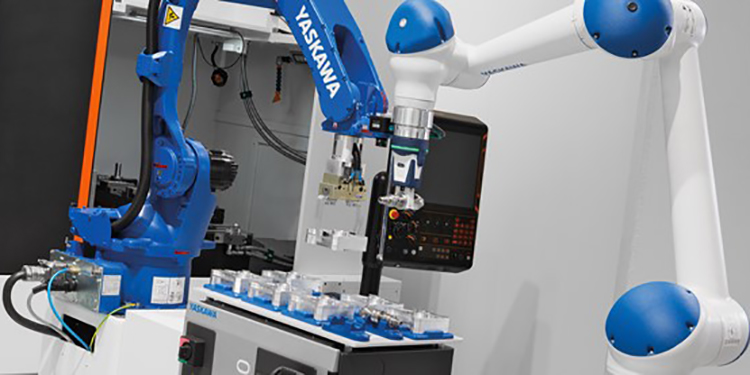Beyond The Robot: Keys For A Successful Robotic Implementation

Investing in and implementing a collaborative robot (or “cobot”) solution — whether that be autonomous mobile robots (AMRs), automatic guided vehicles (AGVs), or robotic arms — is not a unilateral undertaking. Rather, to ensure the success of the installation, there are a variety of additional areas beyond the robotic technology that should be considered, as they contribute to the overall safety, effectiveness, and efficiency of the solution.
The members of The Robotics Group of MHI recently recorded an episode of MHIcast — MHI’s podcast featuring the latest insights and trends in the material handling, logistics, and supply chain industries — entitled: “Warehouse Automation: Beyond The Robot.” The session explores five key areas that should be addressed in order to ensure a successful robotic implementation. They include:
- Engineering and design fundamentals
- Software integration
- Safety considerations and risk assessments
- Employment and labor
- Return on investment
Design fundamentals include selecting a robotic solution that empowers associates by improving the quality of their work experience. This includes the ability to increase productivity, as well as improve ergonomics by removing the strains associated with pushing or pulling heavy carts, and fatigue that results from walking for miles through a facility to complete tasks. Additionally, the robotic system should be built on a flexible foundation that allows the solution to shift and adapt to an operation’s changing business needs. The optimal robotic solution will also enhance data collection and analysis for greater visibility and predictability into day-to-day operations.
For robotic installations destined for an existing building, there are a range of facility design and engineering aspects that should be evaluated. These include:
- Will the robots only run on the main concrete floor, or will they also be used on elevated work platforms or mezzanines?
- If the robots are to be used on elevated work platforms, how will they be transported up and down?
- Has the mezzanine structure been structurally engineered to handle the additional universal and point load capacities of the robots, or does it need reinforcement?
- Is the flooring level and made of a material that can withstand the excessive wear and potential abrasions resulting from robotic travel?
- Will the flooring generate a static charge when the robots travel upon it, and will that pose a problem for the electronics?
- What modifications will need to be made to the facility’s existing layout and equipment to accommodate the footprint required by the robots?
When looking to implement a fleet of robots, it is important to ensure that their fleet management and control software will integrate easily with the facility’s current warehouse management system (WMS) or warehouse execution system (WES). A consultation with both the robotics supplier and the overarching software supplier is recommended to confirm that any additional programming development or support is in place. This ensures that the new system will function as anticipated.
For safety, it is vital to work with the robotic supplier to ensure that operators will not only be safe when working around the units, but also that they will feel safe doing so. The distinction is that the vast majority of today’s robots — whether fixed or mobile — are designed to interface with and work alongside their human counterparts without protective guarding separating the two. They are loaded with advanced sensor and software technologies that detect the presence of personnel in their surroundings, triggering the robot and slow or stop at a certain distance should their travel path be obstructed to keep workers safe. However, if a robot is not programmed to approach personnel at an appropriate speed, workers may not feel safe (even though they are). Verifying that the experience of interacting with the robots is comfortable for employees will enhance personnel’s satisfaction in working with these systems.
Also, on the topic of labor, the group shared how most workers have embraced their facilities’ robotic installations — rather than fear the systems would put them out of work. The majority of current robotic applications alleviate physical strain and eliminate dull, dirty, dangerous or repetitive work. As manual labor is reduced, employees are often assigned more complex, value-added tasks that they find significantly more engaging. Moreover, the robots themselves need service and support, which has created additional jobs.
Finally, with regard to return on investment (ROI), it was noted that the majority of companies today expect to recoup their investment within a 12-to-18-month timeframe. Because of the inherent flexibility of robotic solutions and the ability to deploy them incrementally then expand the fleet as necessary, companies can likewise spread out the investment.
Looking for more information about integrating robots into your operation? There are a variety of resources available on TRG’s webpage.



